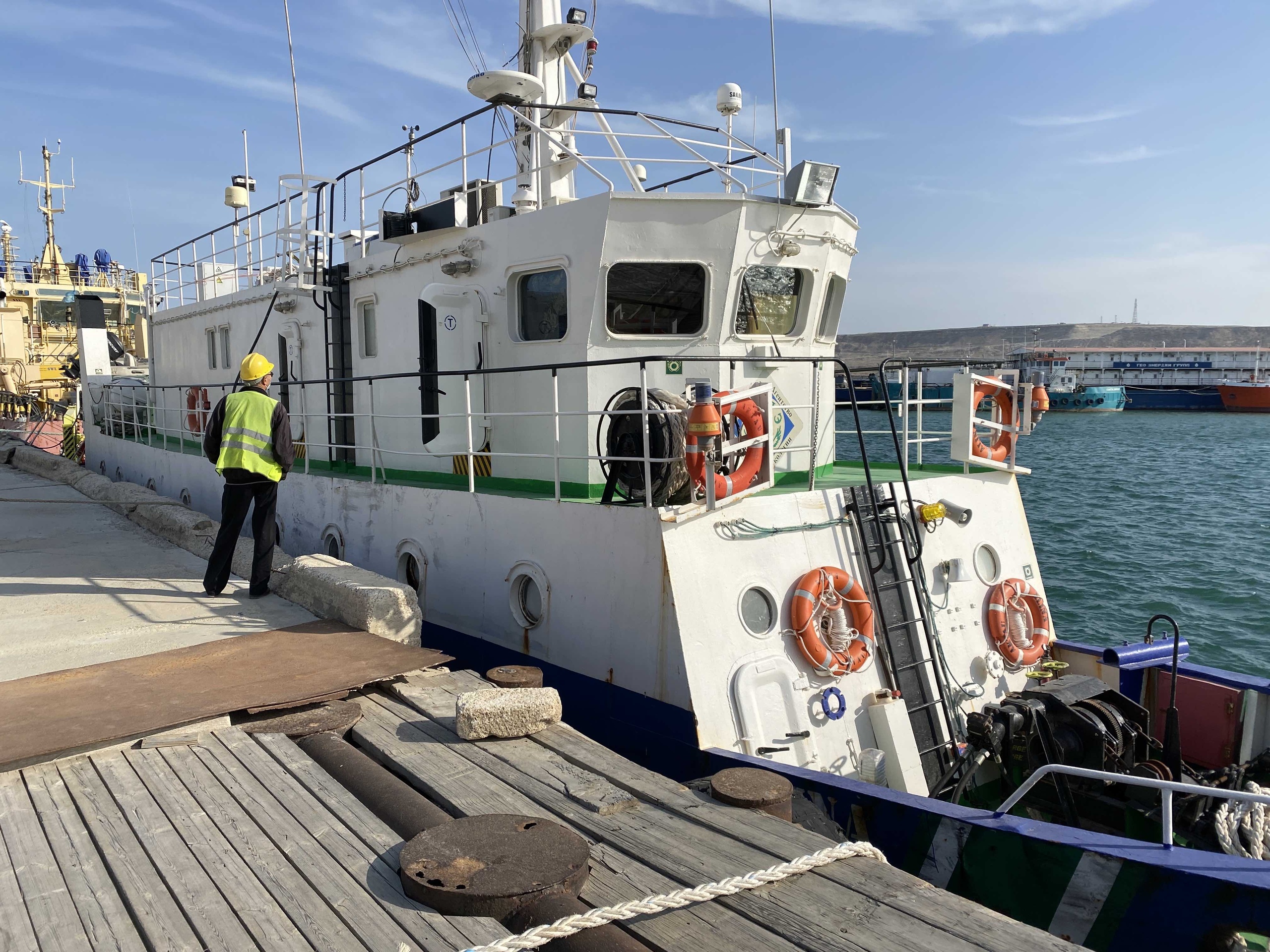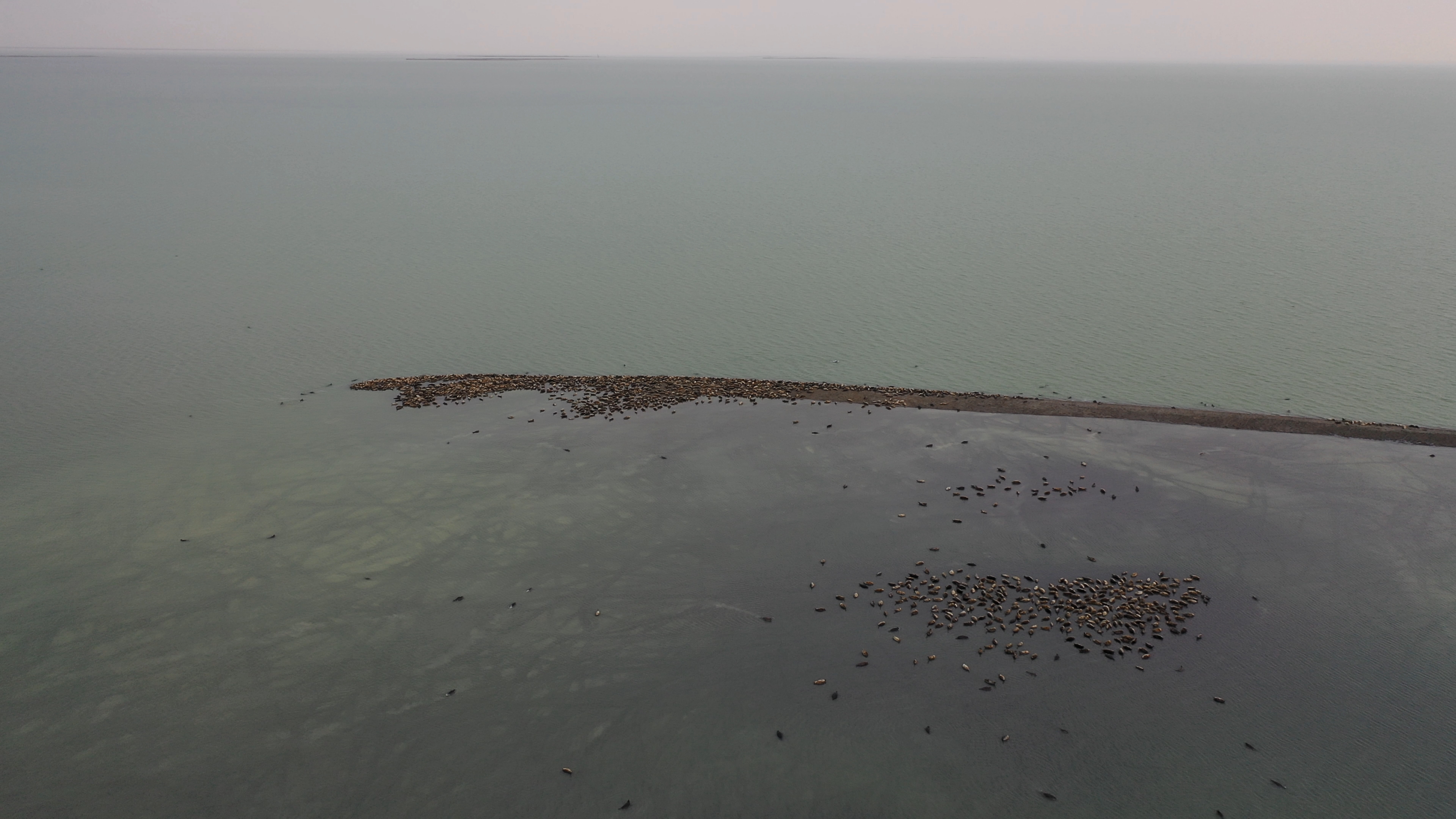In the fall of 2020, the Institute continued the study of the Caspian seal as part of the Russian-Kazakh Program for the Study of the Caspian Seal in the Northern Caspian Sea for 2019-2023 and, with the financial support of NCOC, conducted an autumn expedition.
Field work in the northeastern part of the Caspian Sea (water area of the Republic of Kazakhstan) took place from October 31 to November 14, 2020. Employees of the A.N. Severtsov Institute of Ecology and Evolution RAS (IEE RAS) Maria Solovyova, Gleb Pilipenko, Dmitry Glazov, Natalia Shumeiko, as well as Kazakhstani colleagues - employees of the Research and Production Center for Microbiology and Virology of the Republic of Kazakhstan A.I. Kydyrmanov, K.O. Karamendin, E.T. Kasymbekov and employees of the Kazakhstan Agency of Applied Ecology (KAPE) RK F.V. Klimov, A.N. Mulyaev.
The work was carried out from the research vessel "Alina", which on October 31 set sail from the port of Bautino and moved towards the north-eastern part of the Caspian Sea.

Research vessel Alina
While the vessel was sailing, the staff of the IPEE RAS carried out passing counts of the Caspian seal encounters. In good weather, 1-2 observers stood on the upper deck all daylight hours and recorded all encounters of seals. Although few animals were encountered, some were photographed.
Caspian seal at sea
The most important task of the work was the capture of live Caspian seals, which was carried out on shalygs - areas of the seabed which are bare due to the very low water level and form small sand spits. Shalygs are used by Caspian seals for rest.

Caspian seals on a shalyg
Capturing animals demanded the maximum mobilization of physical forces from the members of the expedition. In a matter of seconds, when the boat approached the shalyga, it was required of them to jump out of it, run to the nearest seal and grab it by the flippers or cover it with a net. At the same time, the animals, having heard the noise of the boat, began to go off the shalyga, and heavy mustang suits and rubber boots made the task more difficult for the catchers.
On the first run, 4 seals were caught. But a few days later, on the second attempt, the catch was much larger - 9 individuals.
All captured seals were transported to the Research Vessel Alina, where all further work was carried out.
The Caspian seal must be held tight, otherwise it may bite with its sharp teeth
The Caspian seal research program is large-scale, and involves a comprehensive study of animal health, biology and ecology of the species. To do this, for various studies (toxicological, hormonal, virological, genetic, etc.) samples of hair, blood, eye and nasal swabs were taken from seals, and the animals themselves were carefully measured and weighed.
Measuring the Caspian seal on board the RV "Alina"
Taking blood from a vein on the back flipper of the Caspian sea
Another challenge was the installation of satellite transmitters. 11 animals were tagged to track the movements of the animals until the next molt.
A seal with an attached transmitter
To dive or not to dive, that is the question
Caption 1 - The transmitter on the Caspian seal will help determine its swimming routes and resting places
